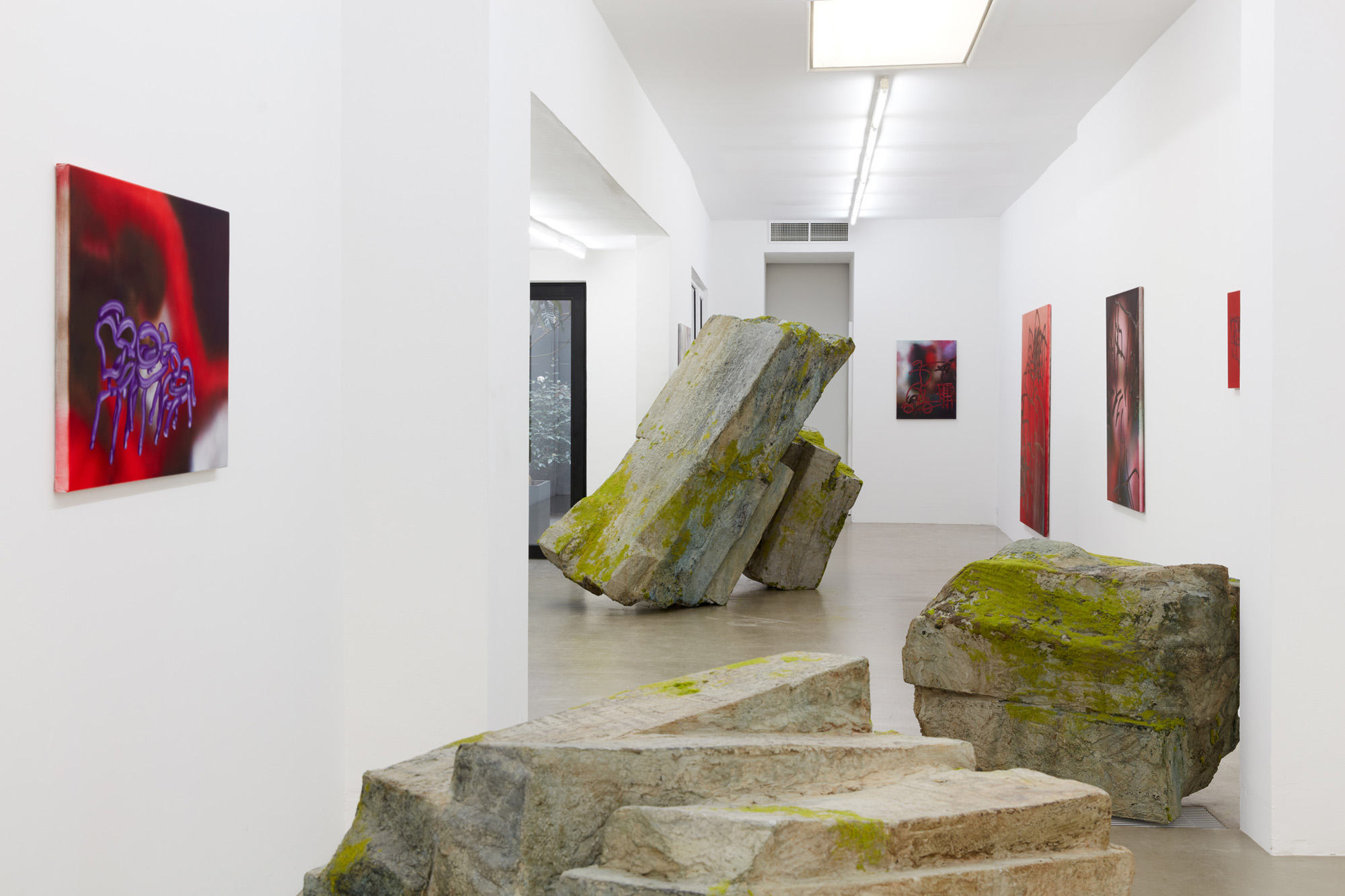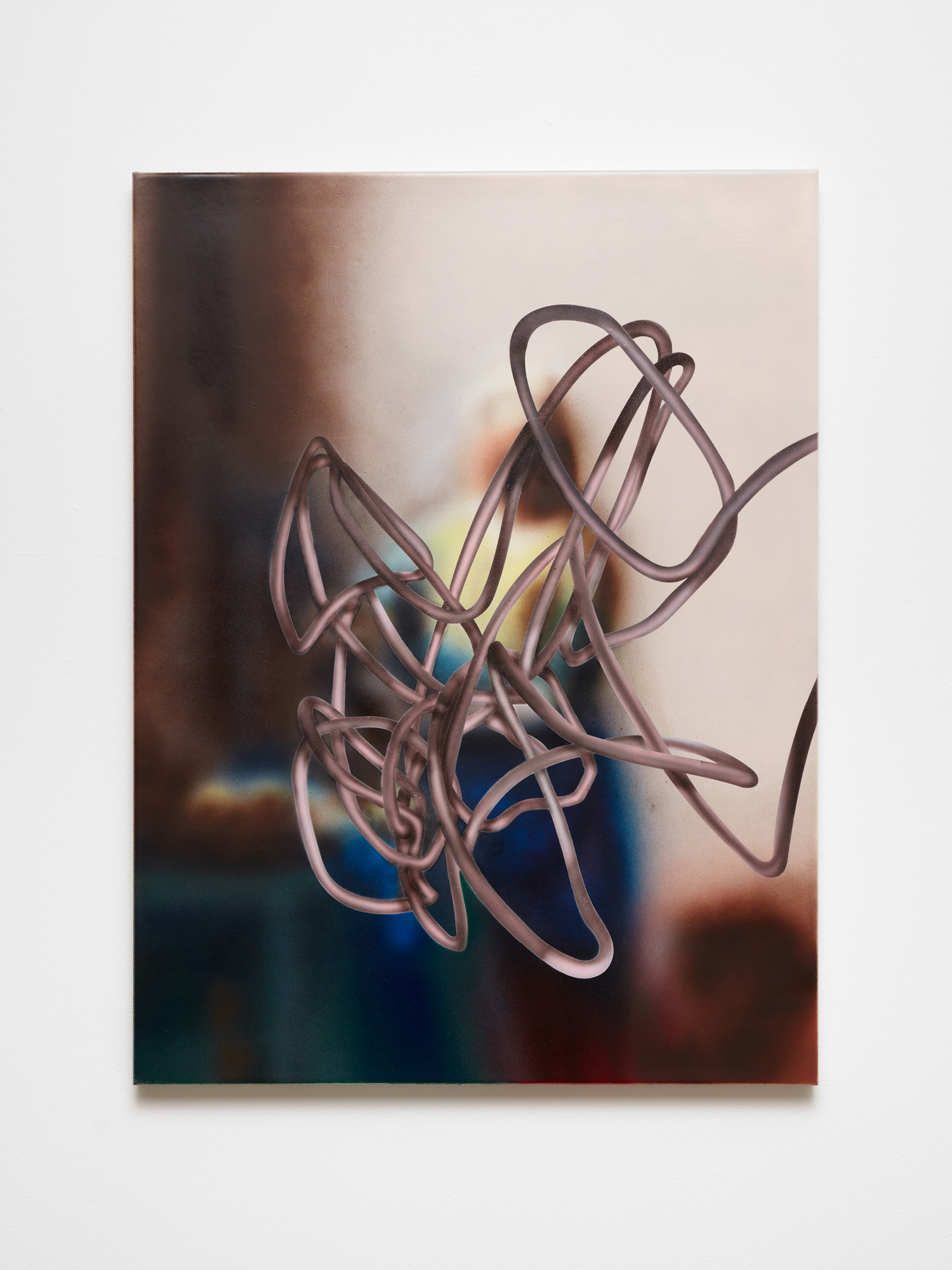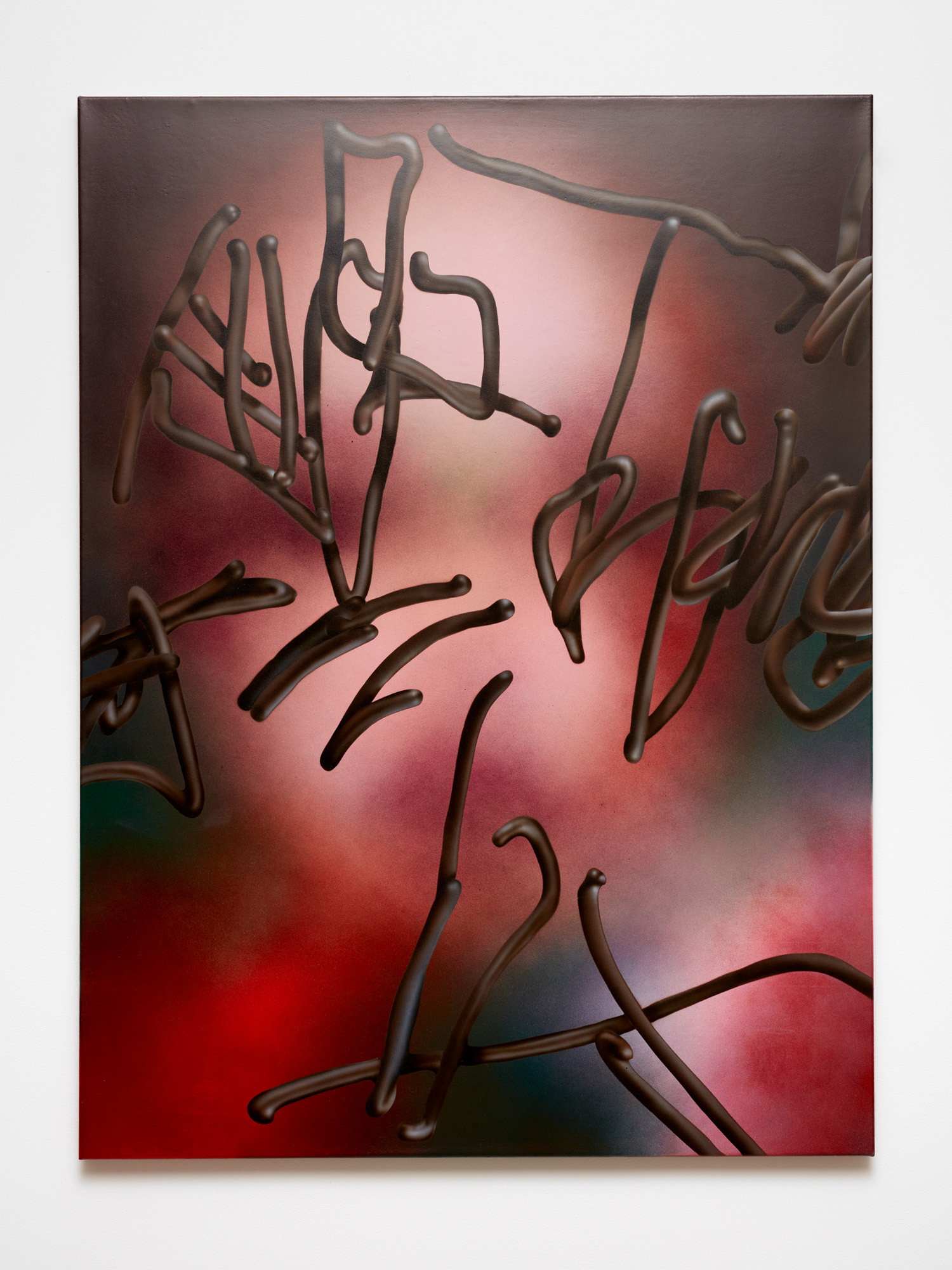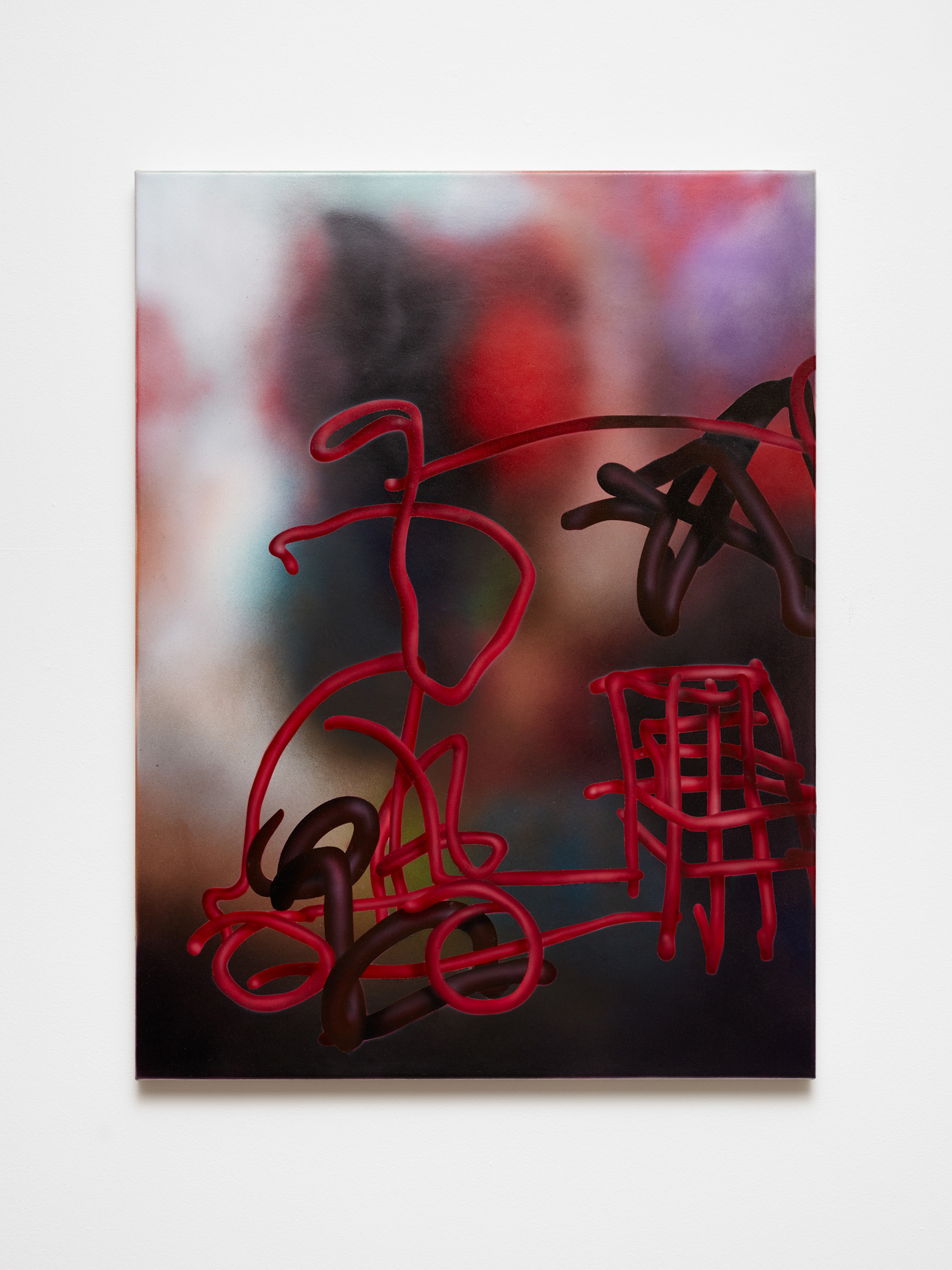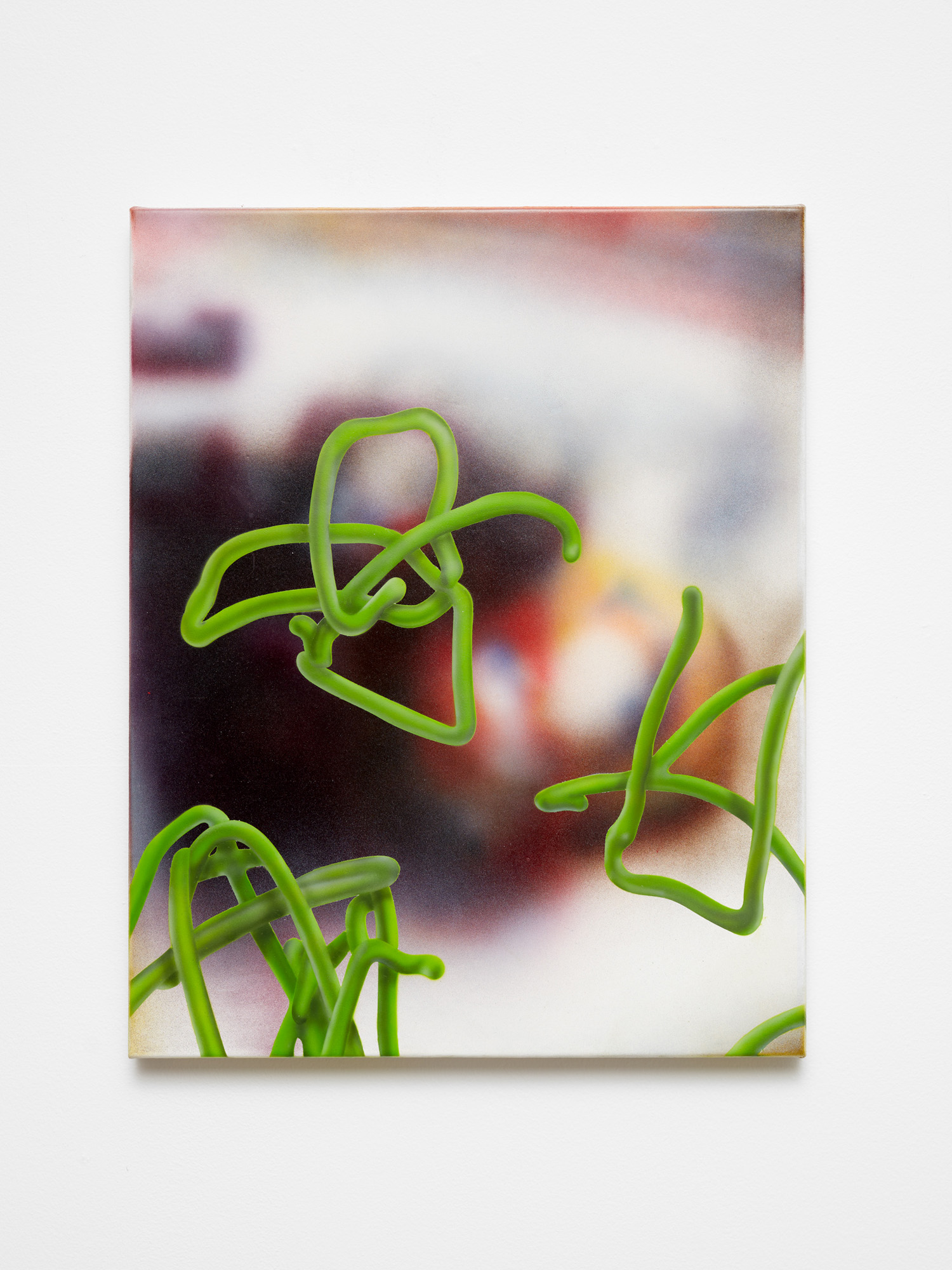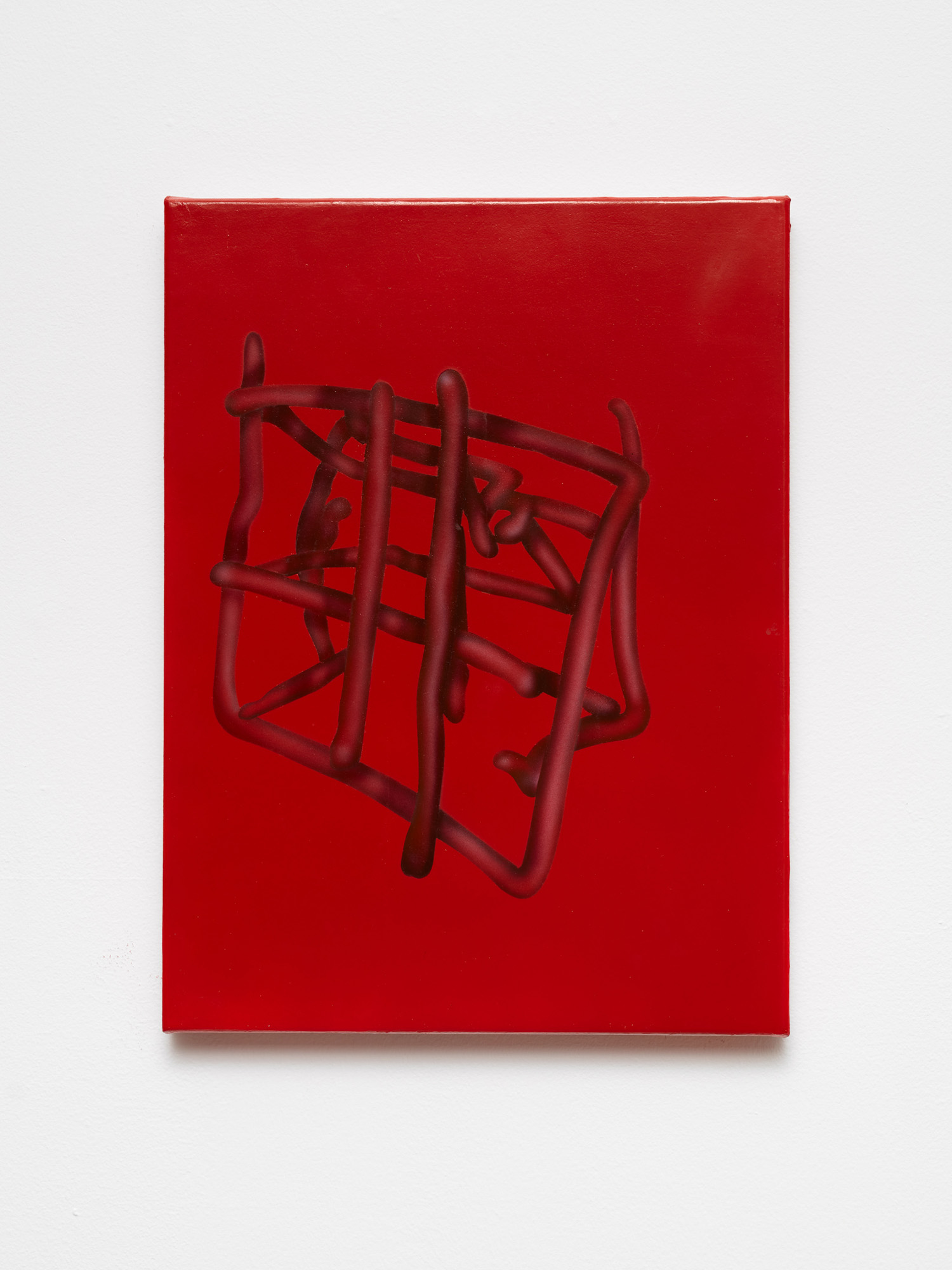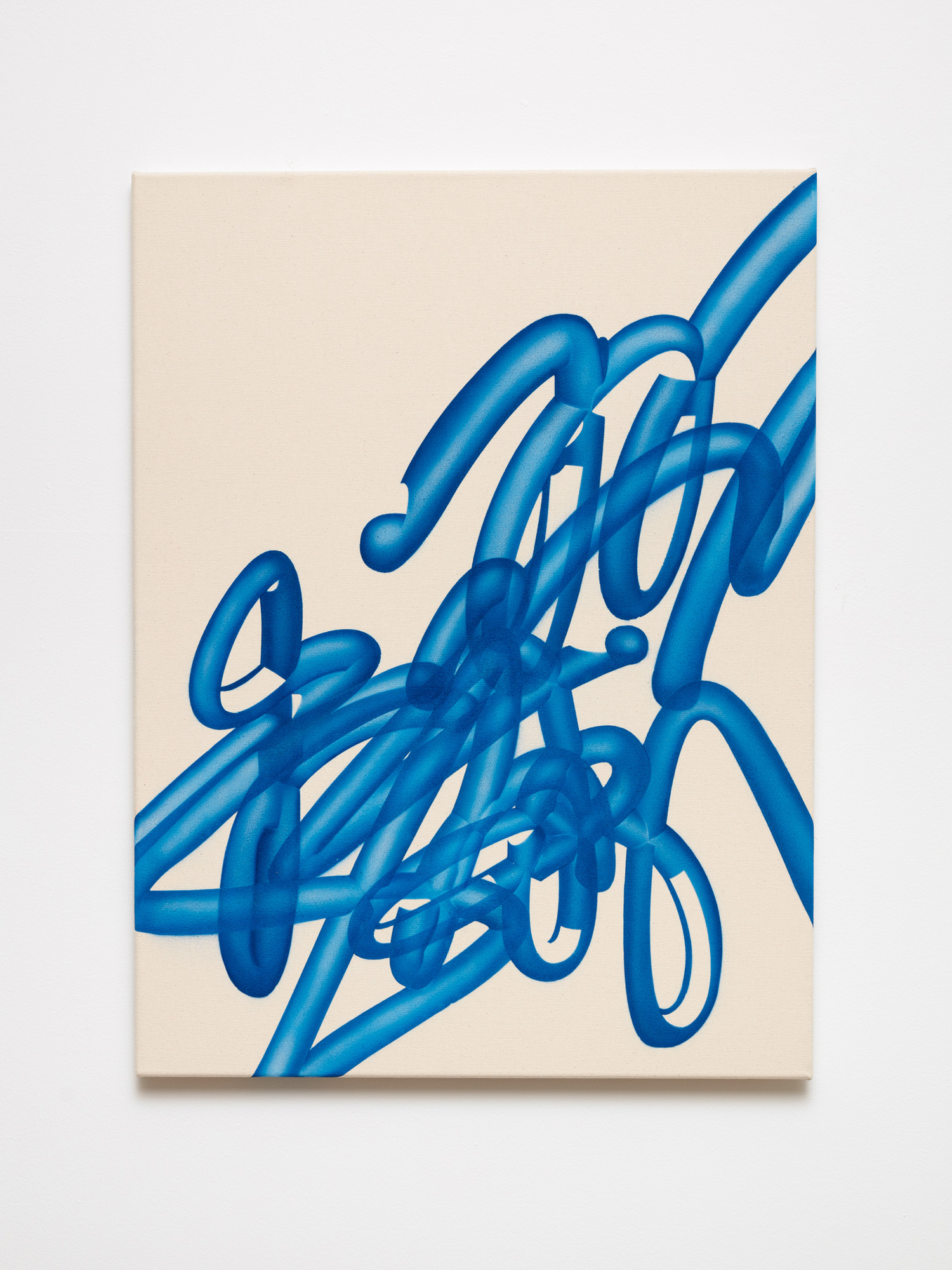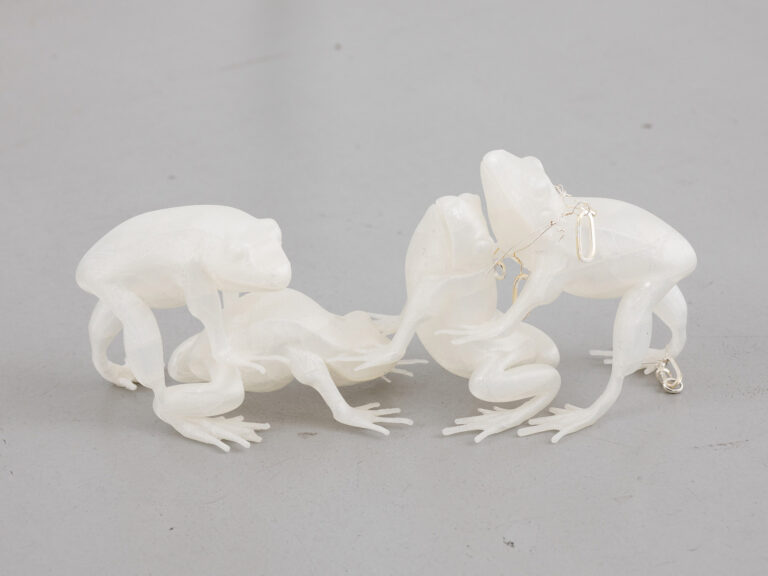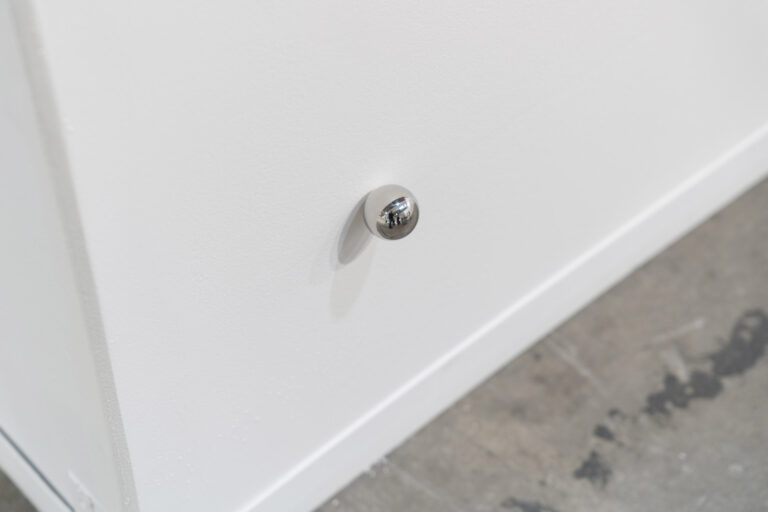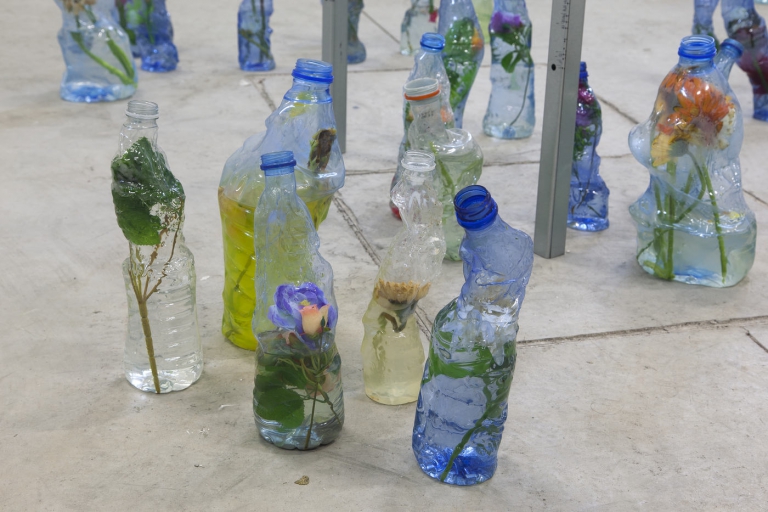Artist: Jonathan Vervoort
Exhibition title: You came, You saw, You continued scrolling
Venue: Base-Alpha, Antwerp, Belgium
Date: March 3 – April 16, 2022
Photography: We Document Art, all images copyright and courtesy of the artist and Base-Alpha, Antwerp
The title of the exhibition, ‘You came, You saw, You continued scrolling’ recalls Plutarch’s Julius Caesar, penning the iconic phrase ‘I came; I saw; I conquered’ circa 47 BC. These days, most of us feel less the conquerors and more the conquered. Every day we seem to dig ourselves deeper into our digital prisons—that is, if they turn out to be prisons. Vervoort’s paintings don’t offer a remedy, but rather reflect on this stream of thought. Strongly influenced by the digital part of our existence Vervoort explores the borders between the digital and analogue. His paintings consistently take up stale oppositions—analogue/digital, expressive/rational—and dissolve them, challenging the position of the painting itself.
Since their earliest existence humans have left behind marks in different shapes and formats– cave paintings, cupules, hieroglyphs etc. Vervoort’s work stems from this universal human urge to mark and questions it in a world that is becoming increasingly more digital everyday. He strives towards a ‘digital effect’ in painting, sometimes referring to his work as ‘expressive cave paintings’. Like hieroglyphs Vervoort includes hidden messages in paintings; symboles like pyramids, mathematical cubes, words and shapes mimicking them almost in a childlike drawn way creating a kind of hyperdimension children’s drawing.
Vervoort’s technique is essential to this effect. A work will usually begin in virtual reality, with a three-dimensional ‘drawing or painting’ that serves as a kind of initial base layer for the painting. This drawing is executed in a wholly spontaneous and expressive process, with little to no forethought or planning. It contrasts hugely with the second stage, where a combination of analogue and digital operations (copy-and-pasting, cutting, deletion) are carefully applied to the design. The whole thing is then transferred to canvas via airbrush, creating a kind of post-digital trompe l’oeil. The use of blurry backgrounds and uniform lighting renders the effect complete, transforming the canvas almost into a kind of screen.
Yet for all its loopy playfulness, Vervoort’s work is animated by profound questions, such as the primordial human urge to mark (or tag) our environment. He is preoccupied with the fear that all human activity will displace itself into simulations; that the theater of life—with its attendant tragedies, miracles and messy human emotions—will be downgraded to a livestream, with us watching from some unknown location in space, awash in blue light and glued to a screen. What happens to us, a species that for millennia has wandered this earth,
when our entire psychic and emotional lives are condensed into a simulation? Who can predict the long-term effects of this sudden, jolting dive?
-Ezra Babski



